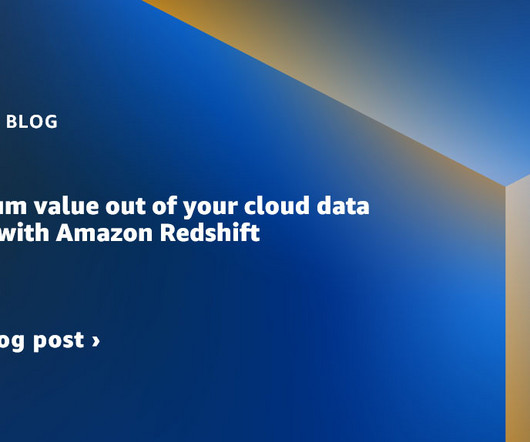Get maximum value out of your cloud data warehouse with Amazon Redshift
AWS Big Data
APRIL 19, 2023
Every day, customers are challenged with how to manage their growing data volumes and operational costs to unlock the value of data for timely insights and innovation, while maintaining consistent performance. As data workloads grow, costs to scale and manage data usage with the right governance typically increase as well.














Let's personalize your content